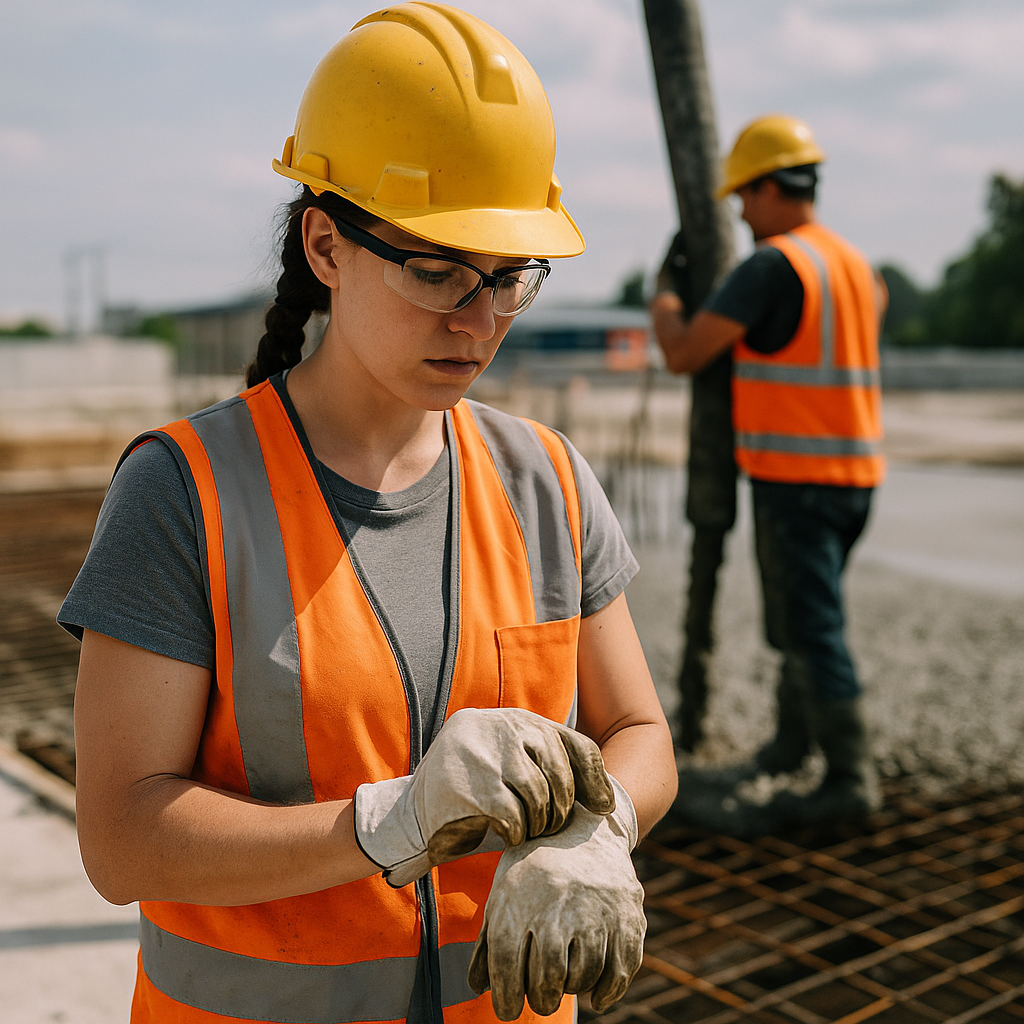
When your worksite involves pouring concrete, managing rebar, and handling hazardous materials, your gear can’t just “kind of fit.” It needs to protect. But for many women in construction, protective gear still doesn’t do its job—because it was never designed for them.
As OSHA introduces new PPE rules in 2025, it’s time to address an uncomfortable truth: most job site safety gear still fits men better than women. And in concrete work, poor fit isn’t just inconvenient—it’s dangerous.
Let’s break down what’s changing, why it matters, and what your team can do to stay ahead.
What’s New in OSHA’s 2025 PPE Standards?
The Occupational Safety and Health Administration (OSHA) will soon require all PPE to properly fit the individual employee—regardless of gender, size, or body type.
Employers will need to:
- Offer PPE in various sizes and styles
- Incorporate fit checks into hazard assessments and audits
- Engage employees in identifying poor-fitting gear
- Keep documentation of PPE distribution and assessments
According to Investopedia, OSHA compliance is more than meeting regulations—it’s about reducing liability and operational risk.
Why Fit Matters More in Concrete Work
Concrete jobs are fast-paced, physical, and filled with potential hazards: caustic materials, heavy loads, sharp forms, and unpredictable terrain. In this environment, safety gear is a lifeline—not a formality.
But PPE still often assumes every worker is built the same. Women on the job frequently wear oversized gloves, hard hats that won’t stay in place, and harnesses designed for different proportions. The result? Real safety threats:
- Gloves that reduce grip strength or dexterity
- Safety glasses that slip or fog up
- Loose garments that become trip hazards
- Poorly fitting harnesses that shift in a fall
- Constant discomfort and distraction from readjusting
This isn’t about comfort—it’s about protection.
The Bigger Picture: Morale, Turnover, and Missed Talent
When workers don’t feel protected, they don’t feel valued. And when safety gear is an afterthought, it sends a message—especially to underrepresented workers: you’re not the priority.
That message has real business consequences. Construction companies are already grappling with labor shortages. Inclusive safety gear isn’t just a compliance issue—it’s a hiring and retention strategy.
Showing your team you care enough to protect everyone equally builds loyalty, trust, and a stronger crew.
What Contractors Should Do Now
You don’t need to wait until 2025 to make your job site safer. Start with these five steps:
1. Review Your PPE Inventory
Audit what gear you offer and whether it fits every employee. Get feedback from your team—especially women—on what works and what doesn’t.
2. Train Supervisors on Fit Standards
Make sure safety leads know what “proper fit” looks like and how to recognize risks during daily operations.
3. Work with Inclusive Vendors
Find suppliers that offer PPE designed for diverse body types. Look for ANSI-rated options that consider fit—not just function.
4. Document Distributions and Fit Checks
Create a system to track who received which gear and when. OSHA will expect this as part of your safety program.
5. Communicate Your Commitment
Don’t just update policies—share them. Add your PPE approach to your website and hiring materials. Let current and future employees know that safety includes everyone.
Need help connecting this strategy to your risk and insurance planning? Talk with our team today.
Why This Matters Beyond Compliance
You don’t have to wait for a fine—or an accident—to take action. The companies leading the way on inclusive safety standards will be the ones attracting the best talent, minimizing downtime, and reducing insurance risk.
This isn’t about being politically correct. It’s about being practical, responsible, and future-ready.
If you want to build a better business, start by protecting every person on your team—properly.
Ready to Move from Compliance to Leadership?
OSHA’s 2025 PPE updates are more than just a rule change. They’re an opportunity to rethink how your business approaches safety, hiring, and culture.
Want help designing a safety-first insurance strategy? Let’s build it together.
You can also request a customized quote based on your team’s specific needs and job site demands.
Safety isn’t one-size-fits-all. And neither is your coverage.
FAQ: OSHA PPE Rules 2025
Who is impacted by the new OSHA PPE rules?
Any employer governed by OSHA—especially in high-risk fields like construction—must comply.
What defines “proper fit”?
PPE must stay in place, not restrict movement, and effectively protect the wearer without constant adjustment.
Do I need women-specific gear?
You don’t need to buy women-only gear—but you must provide gear that fits every employee properly. That usually means more size and fit options.
How do I prove I’m compliant?
Maintain records of PPE distribution, fit evaluations, employee training, and supplier documentation.
What happens if I don’t comply?
Penalties range from fines to legal liability, especially if injury occurs due to poor-fitting gear.
By prioritizing inclusive safety gear now, you’re not just following OSHA—you’re protecting your workers, growing your business, and setting a new standard in the industry.
Let’s build your plan today. Reach out now.
#OSHAUpdates #ConcreteContractors #WorkplaceSafety #InclusivePPE #ConstructionLeadership #SafetyCulture #JobsiteProtection #WorkforceRetention #InsuranceForContractors #RiskManagementSolutions #WomenInConstruction #PPECompliance2025 #ProtectEveryWorker #ConcreteSafety #FieldTestedGear #ConstructionRiskPrevention
